Nissan Leaf vs VW ID.4 – Which car suits you better?
Everyday use, family trips or long-distance drives – here’s where the differences show.
Discover whether Nissan Leaf or VW ID.4 fits your lifestyle better.
Costs and Efficiency:
When it comes to price and running costs, the biggest differences usually appear. This is often where you see which car fits your budget better in the long run.
Nissan Leaf has a somewhat advantage in terms of price – it starts at 30800 £, while the VW ID.4 costs 34600 £. That’s a price difference of around 3801 £.
In terms of energy consumption, the advantage goes to the VW ID.4: with 15.60 kWh per 100 km, it’s slight more efficient than the Nissan Leaf with 16.70 kWh. That’s a difference of about 1.10 kWh.
As for range, the VW ID.4 performs evident better – achieving up to 569 km, about 184 km more than the Nissan Leaf.
Engine and Performance:
Power, torque and acceleration are the classic benchmarks for car enthusiasts – and here, some clear differences start to show.
When it comes to engine power, the VW ID.4 has a distinct edge – offering 340 HP compared to 217 HP. That’s roughly 123 HP more horsepower.
In acceleration from 0 to 100 km/h, the VW ID.4 is clearly perceptible quicker – completing the sprint in 5.40 s, while the Nissan Leaf takes 6.90 s. That’s about 1.50 s faster.
In terms of top speed, the VW ID.4 performs slightly better – reaching 180 km/h, while the Nissan Leaf tops out at 157 km/h. The difference is around 23 km/h.
There’s also a difference in torque: VW ID.4 pulls decisively stronger with 679 Nm compared to 340 Nm. That’s about 339 Nm difference.
Space and Everyday Use:
Whether family car or daily driver – which one offers more room, flexibility and comfort?
Both vehicles offer seating for 5 people.
In curb weight, Nissan Leaf is distinct lighter – 1580 kg compared to 1975 kg. The difference is around 395 kg.
In terms of boot space, the VW ID.4 offers evident more room – 543 L compared to 394 L. That’s a difference of about 149 L.
In maximum load capacity, the VW ID.4 performs clearly better – up to 1575 L, which is about 785 L more than the Nissan Leaf.
When it comes to payload, VW ID.4 evident takes the win – 551 kg compared to 415 kg. That’s a difference of about 136 kg.
Who wins the race?
The VW ID.4 proves to be wins the duel decisively and therefore becomes our DriveDuel Champion!
VW ID.4 is the better all-rounder in this comparison.

VW ID.4
Nissan Leaf
The Nissan Leaf stands out as a pioneering model in the realm of electric vehicles, known for its impressive blend of practicality and eco-friendliness. It offers a smooth and quiet driving experience, making it an ideal choice for city commuting and longer journeys alike. The interior design is both comfortable and intuitive, providing drivers with a sense of modernity and ease of use.
details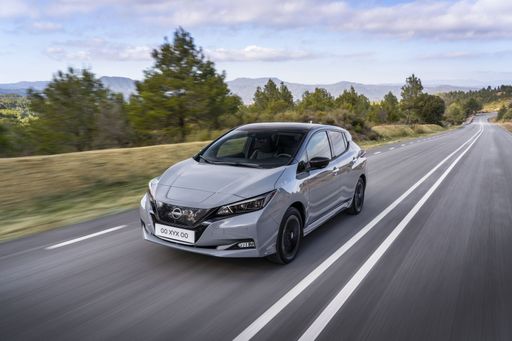 @ germany.nissannews.com
@ germany.nissannews.com
 @ germany.nissannews.com
@ germany.nissannews.com
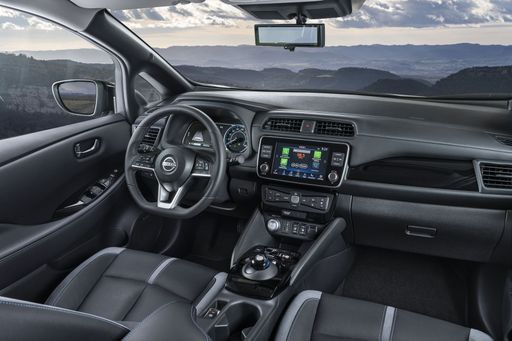 @ germany.nissannews.com
@ germany.nissannews.com
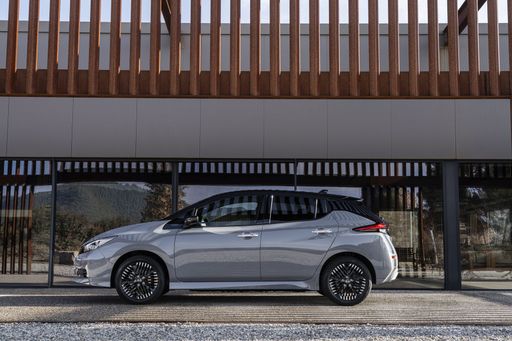 @ germany.nissannews.com
@ germany.nissannews.com
VW ID.4
The VW ID.4 represents Volkswagen's commitment to the electric vehicle market, combining contemporary design with sustainability. Its spacious interior and intuitive technology make it an attractive choice for those seeking comfort and innovation in an eco-friendly package. With a focus on electric performance and practicality, this car is set to be a popular option among environmentally-conscious drivers.
details @ Volkswagen
@ Volkswagen
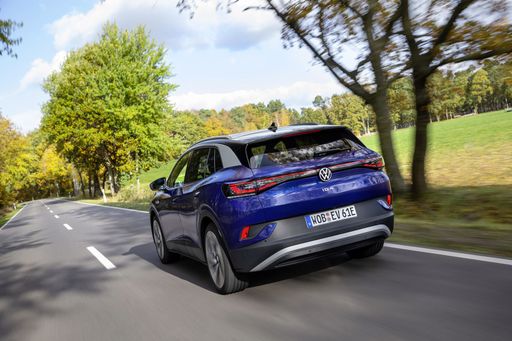 @ Volkswagen
@ Volkswagen
 @ Volkswagen
@ Volkswagen
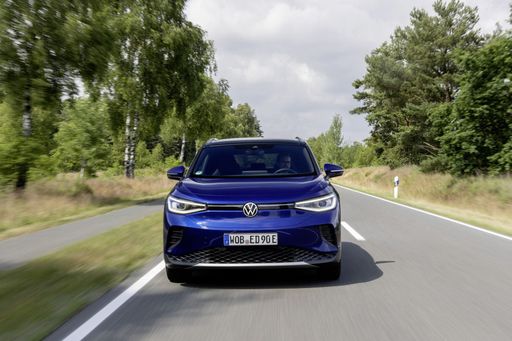 @ Volkswagen
@ Volkswagen
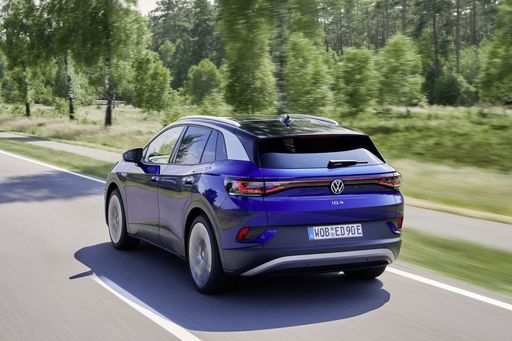 @ Volkswagen
@ Volkswagen
 @ Volkswagen
@ Volkswagen
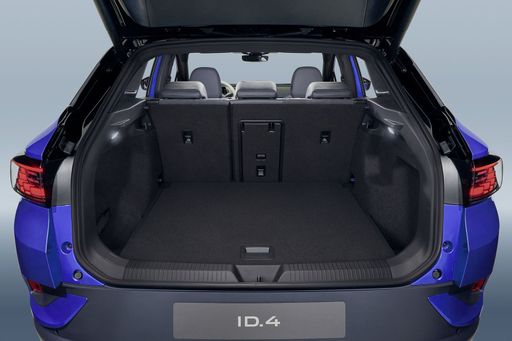 @ Volkswagen
@ Volkswagen
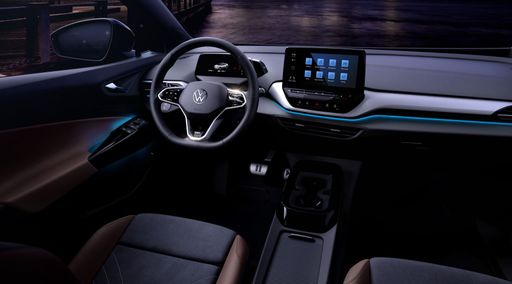 @ Volkswagen
@ Volkswagen

|

|
|
|
|
Costs and Consumption |
|
|---|---|
|
Price
30800 - 37200 £
|
Price
34600 - 47200 £
|
|
Consumption L/100km
-
|
Consumption L/100km
-
|
|
Consumption kWh/100km
16.7 - 17.8 kWh
|
Consumption kWh/100km
15.6 - 17 kWh
|
|
Electric Range
270 - 385 km
|
Electric Range
356 - 569 km
|
|
Battery Capacity
39 - 59 kWh
|
Battery Capacity
52 - 77 kWh
|
|
co2
0 g/km
|
co2
0 g/km
|
|
Fuel tank capacity
-
|
Fuel tank capacity
-
|
Dimensions and Body |
|
|---|---|
|
Body Type
Hatchback
|
Body Type
SUV
|
|
Seats
5
|
Seats
5
|
|
Doors
5
|
Doors
5
|
|
Curb weight
1580 - 1756 kg
|
Curb weight
1975 - 2248 kg
|
|
Trunk capacity
385 - 394 L
|
Trunk capacity
543 L
|
|
Length
4490 mm
|
Length
4582 - 4584 mm
|
|
Width
1788 mm
|
Width
1852 mm
|
|
Height
1540 - 1545 mm
|
Height
1619 - 1634 mm
|
|
Max trunk capacity
790 L
|
Max trunk capacity
1575 L
|
|
Payload
384 - 415 kg
|
Payload
511 - 551 kg
|
Engine and Performance |
|
|---|---|
|
Engine Type
Electric
|
Engine Type
Electric
|
|
Transmission
Automatic
|
Transmission
Automatic
|
|
Transmission Detail
Reduction Gearbox
|
Transmission Detail
Reduction Gearbox
|
|
Drive Type
Front-Wheel Drive
|
Drive Type
Rear-Wheel Drive, All-Wheel Drive
|
|
Power HP
150 - 217 HP
|
Power HP
170 - 340 HP
|
|
Acceleration 0-100km/h
6.9 - 7.9 s
|
Acceleration 0-100km/h
5.4 - 9 s
|
|
Max Speed
144 - 157 km/h
|
Max Speed
160 - 180 km/h
|
|
Torque
320 - 340 Nm
|
Torque
310 - 679 Nm
|
|
Number of Cylinders
-
|
Number of Cylinders
-
|
|
Power kW
110 - 160 kW
|
Power kW
125 - 250 kW
|
|
Engine capacity
-
|
Engine capacity
-
|
General |
|
|---|---|
|
Model Year
2019
|
Model Year
2023 - 2025
|
|
CO2 Efficiency Class
A
|
CO2 Efficiency Class
A
|
|
Brand
Nissan
|
Brand
VW
|
What drivetrain options does the Nissan Leaf have?
Available configurations include Front-Wheel Drive.
The prices and data displayed are estimates based on German list prices and may vary by country. This information is not legally binding.
